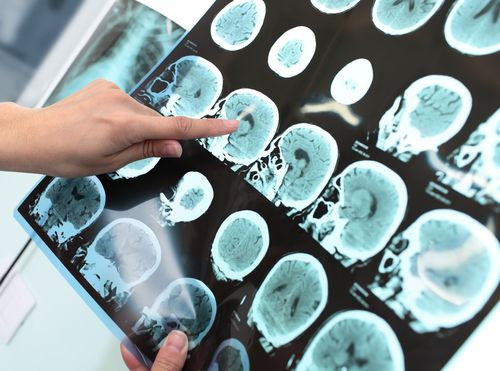Not All Brains With Amyloid Plaques Will Develop Alzheimer's, Thanks To A 'Neural Workaround'

Beta-amyloid plaques are the hallmark of Alzheimer’s disease (AD), blocking neural pathways and causing memory loss. The aging brain develops these plaques naturally, however, they appear more often in brains with AD. So, why is it that certain people with beta-amyloid plaques retain their cognitive function while others develop Alzheimer’s? A new study suggests that this happens because some peoples' brains are able to develop a so-called neural workaround, which compensates for the destruction caused by beta-amyloid.
"This study provides evidence that there is plasticity or compensation ability in the aging brain that appears to be beneficial, even in the face of beta-amyloid accumulation," lead investigator Dr. William Jagust said in a statement. The findings of the study were published Sunday in Nature Neuroscience.
Beta-amyloid plaques are peptide sequences of amino acids. They're formed when enzymes in the brain cut the precursor proteins to beta-amyloids wrongly, causing them to be released into the space outside the neuron — when they're cut correctly, they release a fragment that promotes brain growth. Previous studies had even shown a correlation between beta-amyloid deposits and increased brain function, but whether these deposits led to better mental performance was still unknown. Though they start off as a single molecule, eventual build-up leads to the formation of clumps. These clumps then bind to nerve cell receptors and destroy their connection to other nerves, leading to AD.
To confirm that some people with beta-amyloid still had proper brain function, the current study looked at brain scans from 22 healthy young adults and 49 older adults who had no signs of mental decline. The scans showed that 16 of the older adults had amyloid desposits, while the remaining 55 did not. The subjects were then asked to memorize various pictures while functional magnetic resonance imaging (fMRI) scanned their brains for activity. Then, the researchers tested the subjects “gist memory” by asking them if a written description, such as a boy doing a handstand, corresponded to the pictures they had just viewed. They were also asked if other written details, such as the color of the boy’s shirt or the background, were true.
"Generally, the groups performed equally well in the tasks, but it turned out that for people with beta-amyloid deposits in the brain, the more detailed and complex their memory, the more brain activity there was," Jagust said. "It seems that their brain has found a way to compensate for the presence of the proteins associated with Alzheimer's."
The experiment couldn’t reveal, however, why some people with beta-amyloid deposits are better at using certain parts of their brain compared to others. Drawing on previous research, the scientists say that a lifetime of mental stimulation may result in lower levels of beta-amyloid, as constant stimulation trains the brain to adapt better to potential damage.
Source: Elman J, Oh H, Jagust W. Nature Neuroscience. 2014.



























